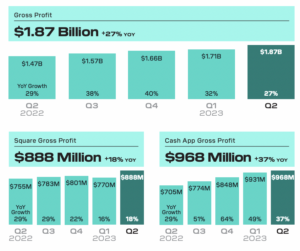Most of the economic and social policies that dominated the COVID-19 pandemic era are gone. Masks, vaccine cards, and negative COVID tests are no longer required to enter restaurants or travel. One of the last policies to change will only be visible in consumer bank accounts: the resumption of federal student loan payments.
These loans began accruing interest again in September and repayment started in October (due dates will vary for individual borrowers). The Biden Administration has instituted a 12-month grace period to help borrowers adjust to regular payments. During this time, missed payments will not negatively affect borrowers’ credit histories.
The repayment burden hit nearly 44 million Americans, and many will struggle. This opens a window of opportunity for financial institutions and financial service providers to step up and provide guidance and transparency into liability management. With the right tools and data, there is an immense opening for lenders to gain the loyalty and trust of existing clients, while potentially drawing in a new wave of younger clients in the process.
Repayment Will Hit Hard
It’s been three years since most people with federal student debt were required to make payments. Some borrowers maintained their payments and will benefit from 36+ months of interest-free payments. Everyone else is looking at their paycheck and wondering where the money for extra payments will come from.
This may feel like financial whiplash for borrowers who counted on having up to $20,000 of their federal student debt forgiven — an initiative the US Supreme Court struck down in June.
In short, many borrowers, 46% according to a recent survey by U.S. News, are unprepared for payments to resume.
The Need for Debt Management Innovation
One of the reasons that borrowers are so poorly informed about their repayment details is because of reshuffling in the student loan servicing industry. Several large student loan servicers sold off their federal student loan portfolios in the past few years. Many borrowers didn’t realize this happened and haven’t reoriented to the company that now holds their loan.
Borrowers need to register their credentials with the new servicer and get acquainted with the process of repayment. Today, there isn’t a central place for borrowers to view all of their student loans and manage repayment. Current options for linking multiple loans to a personal finance management tool, or other service, are time-consuming and may not cover all the loan servicers.
For borrowers with large debt balances across multiple accounts, this situation can feel overwhelming. All borrowers stand to benefit from tools and services that help them engage their debt obligations proactively.
The good news? Banks, credit unions, and financial technology companies have an opportunity to help ease the pain as borrowers make the shift back to monthly payments. Open finance and embedded API technologies are providing opportunities to create a clear path toward financial wellness, helping overburdened Americans climb out of debt. Adopting new technologies presents an opportunity to build consumer loyalty and goodwill, while simultaneously winning over new borrowers tired of antiquated lending systems.
Clarity Is the First Step
The first step to making forward progress with debt is comprehensive visibility. When borrowers see all of their loans – and additional debt – in one place, they can start planning repayment or assessing other options like consolidation or income-based repayment.
Based on the same survey from U.S. News, 83% of borrowers intend to refinance or extend their payment plan to reduce monthly payments. This indicates widespread demand for personalized recommendations on the path to financial freedom.
There are some key components to providing this level of support. First, borrowers need a way to gain visibility of their student loan debt. Ideally, the borrower can do this using only their legal name and phone number given the high unbanked and underbanked population in the US. Once they are connected and have visibility of all of their accounts, those connections should remain evergreen. In other words, borrowers should not have to re-authenticate their information – all accounts should stay connected and up-to-date without screen scraping or brittle API connections.
With this approach, borrowers not only have greater clarity and visibility of their loan accounts, financial service providers can retrieve real-time student loan data. Institutions that tap into this level of data can construct personalized, competitive product offerings for borrowers in their customer base, providing opportunities for lower interest rates and more flexible payment options.
Support Borrowers Now to Gain Trust & Grow Future Business
The $1.7 trillion student debt load in America isn’t going away in the foreseeable future. The average student borrows more than $30,000 to pursue a bachelor’s degree and this amount of debt certainly poses implications for an individual’s future financing options.
Without the right resources to make smart decisions about their debt, these consumers risk getting stuck in a financial rut, making it more difficult to qualify for financial products in the future, like auto loans or an affordable mortgage rate.
The best approach is to better equip consumers with liability management tools that help carve clear, attainable paths toward financial freedom. As the average age of a student loan borrower is 25 to 34 years old, many are (or soon will be) approaching the next phase of life including home ownership, car purchases and/or business lending.
Given the right tools and support, they’ll turn to the institutions they trust most with these monumental decisions. The organizations that make it easier for borrowers to manage and make informed financial decisions about their debt will gain a competitive advantage that’s hard to beat: established relationships with a more engaged and profitable customer base. Invest the time and resources to support your borrowers now to realize these future gains
.pp-multiple-authors-boxes-wrapper.box-post-id-45383.pp-multiple-authors-layout-boxed.multiple-authors-target-shortcode.box-instance-id-1 .box-header-title { font-size: 20px !important; } .pp-multiple-authors-boxes-wrapper.box-post-id-45383.pp-multiple-authors-layout-boxed.multiple-authors-target-shortcode.box-instance-id-1 .box-header-title { font-weight: bold !important; } .pp-multiple-authors-boxes-wrapper.box-post-id-45383.pp-multiple-authors-layout-boxed.multiple-authors-target-shortcode.box-instance-id-1 .box-header-title { color: #000000 !important; } .pp-multiple-authors-boxes-wrapper.box-post-id-45383.pp-multiple-authors-layout-boxed.multiple-authors-target-shortcode.box-instance-id-1 .pp-author-boxes-avatar img { border-style: none !important; } .pp-multiple-authors-boxes-wrapper.box-post-id-45383.pp-multiple-authors-layout-boxed.multiple-authors-target-shortcode.box-instance-id-1 .pp-author-boxes-avatar img { border-radius: 5% !important; } .pp-multiple-authors-boxes-wrapper.box-post-id-45383.pp-multiple-authors-layout-boxed.multiple-authors-target-shortcode.box-instance-id-1 .pp-author-boxes-name a { font-size: 24px !important; } .pp-multiple-authors-boxes-wrapper.box-post-id-45383.pp-multiple-authors-layout-boxed.multiple-authors-target-shortcode.box-instance-id-1 .pp-author-boxes-name a { font-weight: bold !important; } .pp-multiple-authors-boxes-wrapper.box-post-id-45383.pp-multiple-authors-layout-boxed.multiple-authors-target-shortcode.box-instance-id-1 .pp-author-boxes-name a { color: #000000 !important; } .pp-multiple-authors-boxes-wrapper.box-post-id-45383.pp-multiple-authors-layout-boxed.multiple-authors-target-shortcode.box-instance-id-1 .pp-author-boxes-description { font-style: none !important; } .pp-multiple-authors-boxes-wrapper.box-post-id-45383.pp-multiple-authors-layout-boxed.multiple-authors-target-shortcode.box-instance-id-1 .pp-author-boxes-description { text-align: left !important; } .pp-multiple-authors-boxes-wrapper.box-post-id-45383.pp-multiple-authors-layout-boxed.multiple-authors-target-shortcode.box-instance-id-1 .pp-author-boxes-meta a span { font-size: 20px !important; } .pp-multiple-authors-boxes-wrapper.box-post-id-45383.pp-multiple-authors-layout-boxed.multiple-authors-target-shortcode.box-instance-id-1 .pp-author-boxes-meta a span { font-weight: normal !important; } .pp-multiple-authors-boxes-wrapper.box-post-id-45383.pp-multiple-authors-layout-boxed.multiple-authors-target-shortcode.box-instance-id-1 .pp-author-boxes-meta { text-align: left !important; } .pp-multiple-authors-boxes-wrapper.box-post-id-45383.pp-multiple-authors-layout-boxed.multiple-authors-target-shortcode.box-instance-id-1 .pp-author-boxes-meta a { background-color: #6adc21 !important; } .pp-multiple-authors-boxes-wrapper.box-post-id-45383.pp-multiple-authors-layout-boxed.multiple-authors-target-shortcode.box-instance-id-1 .pp-author-boxes-meta a { color: #ffffff !important; } .pp-multiple-authors-boxes-wrapper.box-post-id-45383.pp-multiple-authors-layout-boxed.multiple-authors-target-shortcode.box-instance-id-1 .pp-author-boxes-meta a:hover { color: #ffffff !important; } .pp-multiple-authors-boxes-wrapper.box-post-id-45383.pp-multiple-authors-layout-boxed.multiple-authors-target-shortcode.box-instance-id-1 .ppma-author-user_url-profile-data { color: #6adc21 !important; } .pp-multiple-authors-boxes-wrapper.box-post-id-45383.pp-multiple-authors-layout-boxed.multiple-authors-target-shortcode.box-instance-id-1 .ppma-author-twitter-profile-data span, .pp-multiple-authors-boxes-wrapper.box-post-id-45383.pp-multiple-authors-layout-boxed.multiple-authors-target-shortcode.box-instance-id-1 .ppma-author-twitter-profile-data i { font-size: 16px !important; } .pp-multiple-authors-boxes-wrapper.box-post-id-45383.pp-multiple-authors-layout-boxed.multiple-authors-target-shortcode.box-instance-id-1 .ppma-author-twitter-profile-data { background-color: #6adc21 !important; } .pp-multiple-authors-boxes-wrapper.box-post-id-45383.pp-multiple-authors-layout-boxed.multiple-authors-target-shortcode.box-instance-id-1 .ppma-author-twitter-profile-data { border-radius: 50% !important; } .pp-multiple-authors-boxes-wrapper.box-post-id-45383.pp-multiple-authors-layout-boxed.multiple-authors-target-shortcode.box-instance-id-1 .ppma-author-twitter-profile-data { text-align: center !important; } .pp-multiple-authors-boxes-wrapper.box-post-id-45383.pp-multiple-authors-layout-boxed.multiple-authors-target-shortcode.box-instance-id-1 .ppma-author-linkedin-profile-data span, .pp-multiple-authors-boxes-wrapper.box-post-id-45383.pp-multiple-authors-layout-boxed.multiple-authors-target-shortcode.box-instance-id-1 .ppma-author-linkedin-profile-data i { font-size: 16px !important; } .pp-multiple-authors-boxes-wrapper.box-post-id-45383.pp-multiple-authors-layout-boxed.multiple-authors-target-shortcode.box-instance-id-1 .ppma-author-linkedin-profile-data { background-color: #6adc21 !important; } .pp-multiple-authors-boxes-wrapper.box-post-id-45383.pp-multiple-authors-layout-boxed.multiple-authors-target-shortcode.box-instance-id-1 .ppma-author-linkedin-profile-data { border-radius: 50% !important; } .pp-multiple-authors-boxes-wrapper.box-post-id-45383.pp-multiple-authors-layout-boxed.multiple-authors-target-shortcode.box-instance-id-1 .pp-author-boxes-recent-posts-title { border-bottom-style: dotted !important; } .pp-multiple-authors-boxes-wrapper.box-post-id-45383.pp-multiple-authors-layout-boxed.multiple-authors-target-shortcode.box-instance-id-1 .pp-multiple-authors-boxes-li { border-style: solid !important; } .pp-multiple-authors-boxes-wrapper.box-post-id-45383.pp-multiple-authors-layout-boxed.multiple-authors-target-shortcode.box-instance-id-1 .pp-multiple-authors-boxes-li { color: #3c434a !important; }- SEO Powered Content & PR Distribution. Get Amplified Today.
- PlatoData.Network Vertical Generative Ai. Empower Yourself. Access Here.
- PlatoAiStream. Web3 Intelligence. Knowledge Amplified. Access Here.
- PlatoESG. Carbon, CleanTech, Energy, Environment, Solar, Waste Management. Access Here.
- PlatoHealth. Biotech and Clinical Trials Intelligence. Access Here.
- Source: https://www.fintechnexus.com/student-borrowers-lenders-transparency/
- :has
- :is
- :not
- :where
- $UP
- 000
- 1
- 12
- 12 months
- 2021
- 25
- 7
- a
- About
- ABSTRACT
- According
- Accounts
- acquainted
- across
- Additional
- adjust
- administration
- Adopting
- ADvantage
- affect
- affordable
- again
- age
- All
- america
- Americans
- amount
- an
- and
- Andreessen
- Andreessen Horowitz
- Angel
- answer
- api
- approach
- approaching
- ARE
- AS
- Assessing
- At
- Attainable
- auto
- avatar
- average
- away
- back
- balances
- Bank
- bank accounts
- Banks
- base
- BE
- beat
- because
- been
- began
- benefit
- BEST
- Better
- biden
- Biden Administration
- bold
- borrower
- borrowers
- build
- burden
- business
- by
- Calls
- CAN
- car
- Cards
- Center
- central
- certainly
- change
- clarity
- clear
- clients
- climb
- Co-founder
- code
- color
- come
- Companies
- company
- competitive
- components
- comprehensive
- connected
- Connections
- consolidation
- construct
- consumer
- Consumers
- coo
- Court
- cover
- Covid
- COVID-19
- COVID-19 pandemic
- create
- Credentials
- credit
- Credit Unions
- crucial
- Current
- customer
- customer base
- cutting-edge
- data
- Dates
- Debt
- decisions
- Degree
- Demand
- designed
- details
- difficult
- do
- down
- drawing
- due
- during
- ease
- easier
- Economic
- else
- embedded
- engage
- engaged
- Enter
- Era
- established
- Ether (ETH)
- Evergreen
- everyone
- executive
- existing
- extend
- extra
- Federal
- feel
- few
- finance
- financial
- financial freedom
- Financial institutions
- financial products
- financial service
- financial technology
- financial wellness
- financing
- First
- flexible
- For
- foreseeable
- Forward
- Freedom
- from
- frustrated
- funding
- Funding Round
- future
- Gain
- get
- getting
- given
- going
- gone
- good
- Goodwill
- grace
- greater
- Grow
- Growing
- grown
- guidance
- happened
- Hard
- Have
- having
- help
- helped
- helping
- High
- histories
- Hit
- holds
- Home
- Horowitz
- hover
- How
- HTTPS
- i
- ideally
- immense
- implications
- in
- In other
- Including
- indicates
- individual
- industry
- information
- informed
- Initiative
- institutions
- intend
- interest
- Interest Rates
- into
- Invest
- IT
- ITS
- june
- Key
- large
- Last
- Late
- launch
- launched
- Led
- left
- Legal
- lenders
- lending
- Level
- liability
- Life
- like
- linking
- load
- loan
- Loans
- longer
- looking
- lower
- Loyalty
- make
- Making
- manage
- managed
- management
- Management Tools
- many
- Masks
- May..
- method
- million
- missed
- MIT
- money
- monthly
- months
- monumental
- more
- Mortgage
- most
- multiple
- name
- nearly
- Need
- negative
- negatively
- New
- New technologies
- news
- next
- no
- None
- normal
- now
- number
- obligations
- october
- of
- off
- Offerings
- Old
- on
- once
- ONE
- only
- open
- opening
- opens
- opportunities
- Opportunity
- Options
- or
- organizations
- Other
- Others
- out
- over
- overwhelming
- ownership
- Pain
- pandemic
- participation
- past
- path
- payment
- payments
- People
- period
- personal
- Personal Finance
- Personalized
- phase
- phone
- Place
- plan
- planning
- plato
- Plato Data Intelligence
- PlatoData
- played
- policies
- population
- portfolios
- poses
- potentially
- presents
- process
- Product
- product offerings
- Products
- profitable
- Progress
- provide
- providers
- providing
- purchases
- pursue
- qualify
- Rate
- Rates
- real-time
- realize
- reasons
- recommendations
- reduce
- register
- regular
- Relationships
- remain
- repayment
- required
- Resources
- Restaurants
- resume
- right
- Risk
- Role
- round
- s
- same
- scaling
- scraping
- Screen
- secure
- see
- September
- Series
- Series A
- Series A funding
- Series A funding round
- service
- service providers
- Services
- servicing
- several
- shift
- Short
- should
- significantly
- simultaneously
- since
- situation
- smart
- So
- Social
- sold
- solid
- some
- Soon
- span
- stand
- start
- started
- stay
- Step
- Struggle
- Student
- support
- Supreme
- Supreme Court
- Survey
- sv angel
- Systems
- Tap
- team
- Technologies
- Technology
- technology companies
- tests
- than
- that
- The
- The Future
- their
- Them
- There.
- These
- they
- this
- those
- three
- time
- time-consuming
- tired
- to
- today
- tool
- tools
- toward
- Transparency
- travel
- Trillion
- Truist
- Trust
- TURN
- u.s.
- unbanked
- under
- underbanked
- Unions
- up-to-date
- us
- using
- Vaccine
- Ventures
- View
- visibility
- visible
- Wave
- Way..
- Website
- Wellness
- were
- when
- while
- WHO
- widespread
- will
- window
- winning
- with
- without
- wondering
- words
- Y Combinator
- years
- Younger
- Your
- zephyrnet











